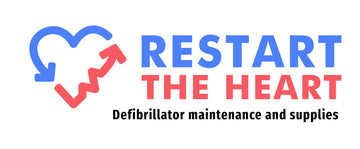Heart Care: Understanding Different Types of Defibrillators
Defibrillators are medical devices that shock the heart, delivering a powerful electric current that stops the heart from beating erratically or quitting. This restores the heart's natural mechanism, similar to rebooting a computer. If defibrillation is successful, the brain sends fresh impulses to the stopped heart, and the heart resumes regular activity.
Defibrillators come with electrocardiogram (ECG) leads and adhesive patches (or paddles). These are placed on the patient's chest that acts as the medium to the shock to the heart. While the process may seem straightforward, there are numerous misconceptions regarding defibrillators and their different types.
What are the Defibrillator Types?
Defibrillator usage is ranked third in the fundamental life-saving chain. The most critical technique in an emergency is to notify the medical professionals and then begin CPR.
If CPR is ineffective, electroshock using a defibrillator can be used. Defibrillators are classified by their proximity to the heart, how they provide electricity, and how they operate.
External and Internal Defibrillators
External defibrillators provide shocks to the thorax via electrodes placed on the thorax without entering the body (non-invasively). It regulates the high energy level when distant electric currents are supplied to the heart.
Internal defibrillators, on the other hand, employ electrodes inserted directly on or near the heart. The shock is delivered directly to the heart, or very close to it, so the energy is equal.
Monophasic and Biphasic Defibrillators
Monophasic (single pulse) defibrillators only run in one direction, where electricity is exchanged between electrodes. Through these channels, the heart receives electric shocks.
Although it’s effective in some cases, the high energy level can cause skin burns and heart muscle (myocardial) damage. Monophasic defibrillators work 60 per cent of the time in the first shock.
In contrast, biphasic (double pulse) defibrillators send shock waves in both positive and negative directions between electrodes. The second current flows in the opposite direction of the first current.
The electric current applied to the chest wall is first positive before reversing, with the heart receiving two electric shocks between the electrodes. Biphasic defibrillators can use lower energy levels (120-200 joules) to have less harmful consequences like burns.
Biphasic defibrillators work 90 per cent of the time due to their double-pulse effect, so biphasic devices outperform monophasic devices while consuming less energy.
Automatic External Defibrillator
Automatic external defibrillators (AEDs) work automatically utilizing the software that comes with them. It estimates the needed energy level by monitoring the patient's heart rhythm. It is non-invasive because it is external.
AEDs are now a life-saving need since they can perform automatic rhythm evaluation, shock determination, process management with audible and visual alerts, energy charging, and shock. A qualified rescuer must utilize semi-automatic shocks. Non-physicians can now buy fully automated AEDs.
Implantable Cardioverter and Wearable Defibrillators
Implantable cardioverter-defibrillator devices are surgically implanted within the body (ICD). They are also called pacemakers. The machine ejects an electrode into the upper main vein.
An electric shock is then supplied to the heart when it experiences ventricular fibrillation or pulseless ventricular tachycardia. Because it is given directly to the heart, it is less powerful than conventional defibrillators.
If a person has ventricular tachycardia or fibrillation and is not a candidate for an ICD, a wearable cardioverter defibrillator (WCD) should be utilized.
A wearable defibrillator tracks and defibrillates on its own. The use of a wearable defibrillation device can be a bridge when a patient's circumstances prevent or delay implanted cardioverter-defibrillator (ICD) placement or when an ICD must be withdrawn.
Conclusion
Take note that some people should not receive or utilise a defibrillator. That's why it's preferable to consult an expert for guidance on the right product. A specialist will determine your need for a defibrillator, the optimum type to use, and how to maintain it.
Are you in need of defibrillators? Restart the Heart is a reputable Australian defibrillator provider, offering AED pads and batteries for all brands. We are known for our speedy delivery services and excellent customer care. Order online today!

